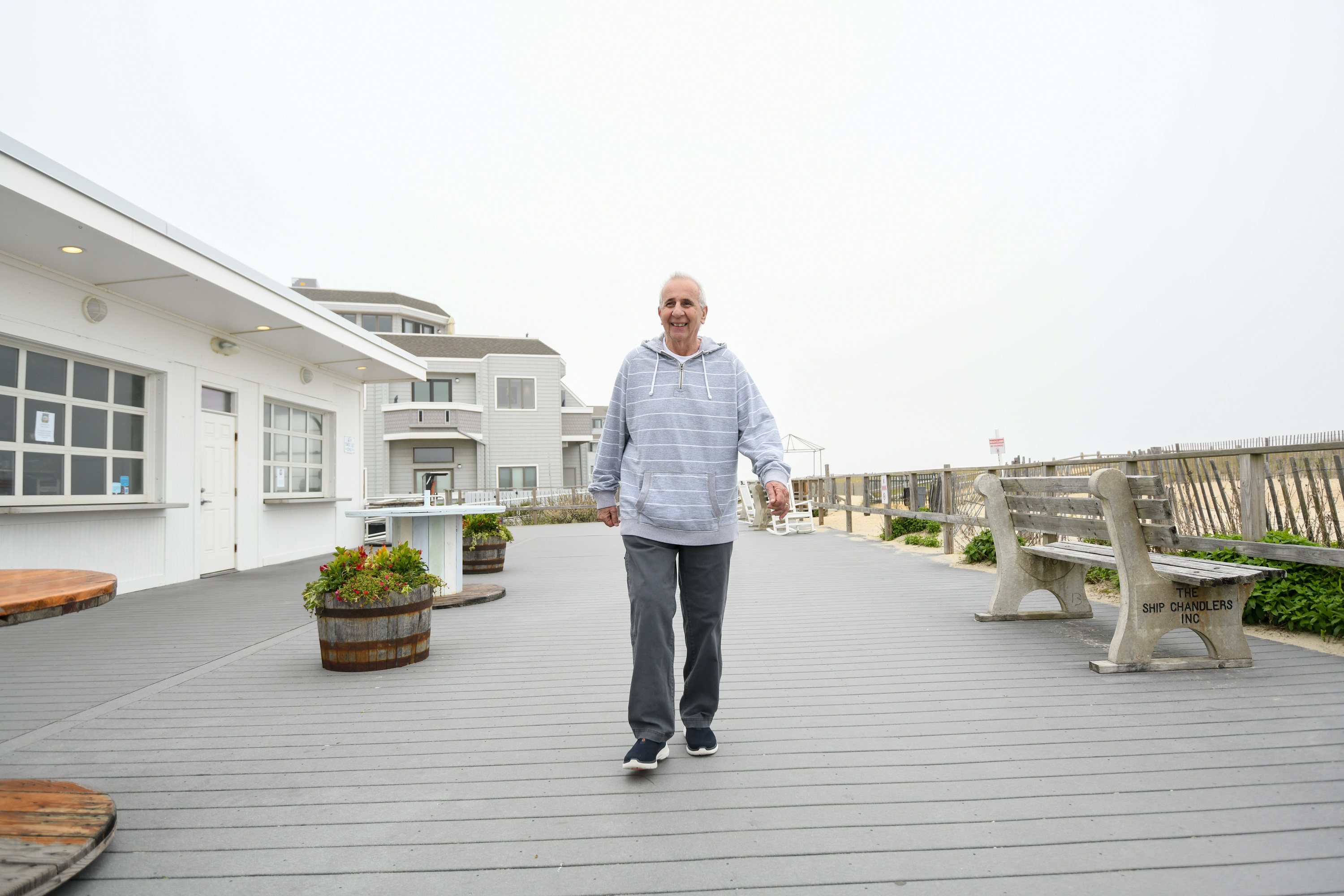Robotic Knee Replacement Surgery Gets 75-Year-Old Back in the (Golf) Game

May 19, 2022
After non-surgical treatments failed to control the pain in 75-year-old Frank Fiorella, Jr.’s right knee, he recalls thinking about knee replacement surgery. “My knee was causing me to miss out on playing with my grandchildren, golf and so many other things I enjoyed,” he says.
The pain was caused by osteoarthritis—which occurs when the natural cartilage between the bones of the knee wears away and the bones are in direct contact with one another, causing pain and stiffness.
Looking for Optimal Results
Frank was scheduled for traditional knee replacement surgery in February 2022 when his orthopedic surgeon, David Rodricks, M.D., offered him a chance to be the very first patient at Ocean University Medical Center to have surgery using brand-new robotic-assisted technology.
The robotic system features a tool that the surgeon holds while performing the surgery to get optimal results. “Robotic surgery uses computerized virtual representations of the patient’s knee on a screen,” Dr. Rodricks explains. “The image includes different anatomical points on the leg to determine the appropriate size of the knee replacement device as well as the best alignment of the knee and precise measurements. It enables me to balance the knee appropriately so it is not too tight or too loose, and perfect balance can be achieved.”
Adds Frank: “Everything was explained to me. I felt very comfortable and confident.”
The surgery took an hour and Frank remained in the hospital overnight for observation. He remembers excellent and attentive care from his team of nurses and therapists, who told him they had never seen such a wide range of motion immediately after surgery. Frank had an amazing range that has since improved to a full 125 degrees.
Long-term Success
Soon after surgery, Frank started regular physical therapy appointments. There, he received leg massages to prevent tight scar tissue formation and worked to rebuild his mobility skills using the bicycle and treadmill. Within a short period of time, he went from using a walker to a cane, and he anticipates being able to drive again soon.
Dr. Rodricks expects Frank to have long-term success with his implant. “The robotic surgery may not make a difference in the healing over the short term, but studies have shown that implants done with robotic surgical support will last longer and feel better over time because of the technology’s ability to get optimal alignment,” he says.
Today, Frank speaks enthusiastically of his experience: “I am proud to be the first one to get the total knee replacement with the robotic system at Ocean. I also am happy that Dr. Rodricks was the first to perform this type of surgery at the medical center. I think that is pretty special.”
Next Steps & Resources:
- Meet our source: David Rodricks, M.D.
- To make an appointment with a doctor near you, call 800-822-8905 or visit our website.
- Learn more about orthopedic care at Hackensack Meridian Health
The material provided through HealthU is intended to be used as general information only and should not replace the advice of your physician. Always consult your physician for individual care.
Clinical Contributors
Why Do Your Knees Hurt When You Squat?

Knee pain when squatting? Learn why from Dr. Russoniello and find relief. JFK University Medical Center offers expert care. Call 800-822-8905.

Avid Golfer from Sea Girt Tees up with Partial Knee Replacement
Former Jersey Shore University Medical Center nurse Sue Blasi is back walking her beloved beagle 3 miles a day after successful partial knee replacement surgery.

